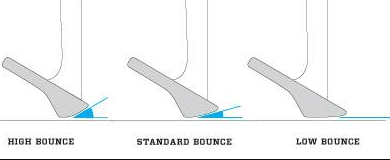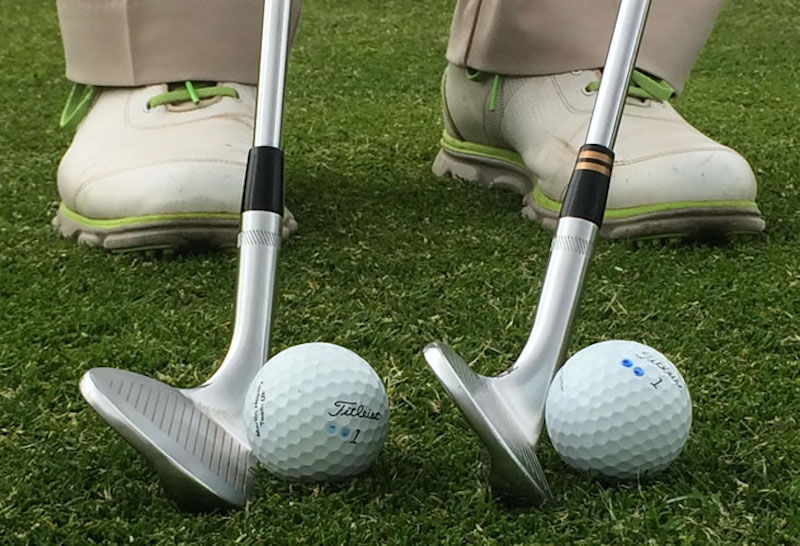learn a little bit about bounce
Next time you go to buy a wedge, make sure you are looking at more than just one of the numbers.
On all clubs, you probably see the big numbers that tell you the degree of the club.
But what some people often overlook is the smaller number that is either under that number on the hosel or somewhere else on the wedge.
That number is the bounce.
Bounce is the curvy bit on the sole of the wedge that enables the head to ‘bounce’ out of the sand, rough or fringe.
Depending on the courses you play and your swing – having the wrong bounce and loft combination may be hurting your game.
Three different types of bounces you will find on wedges:

- Low bounce 10 and lower: Ideal for shots from tight lies and firm turf conditions, if you actually keep your ball on the short grass. Less bounce makes it easier for better golfers to get creative with shots such as flop shots around the green because the leading edge is much smaller. It also helps put back spin on the ball because the edge is a lot sharper, so if you hit the ball perfect you will create great back spin. But not many people can do that.
- Standard bounce 10-16: The wedge for just about any player. Because of the middle ranged bounce the inexperienced player who likes to keep the club face square can use this effectively. But an advanced player who likes to open up the club face can also use it.
- High bounce 12-18: You can usually tell a high bounce club by its big and curved sole. This is perfect for the bad golfer who has problems with topping and thinning chip shots. The big curved sole creates an easier surface for the club to bounce off the ground giving the ball a lot more lift. They are ideal for players with really steep swing planes.
Next time you get fitted for a new wedge, ask about the bounce, it may be all the difference in your short game.

